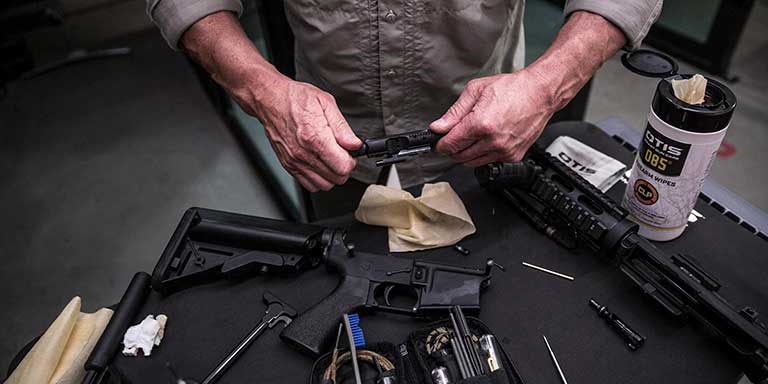
The Ultimate Guide to Firearm Maintenance
Share

Owning a firearm comes with the responsibility of proper maintenance and care. Regular upkeep not only ensures the reliability and longevity of your firearm but also contributes to safe and effective shooting. In this comprehensive guide, we will walk you through the essential steps and best practices for maintaining your firearm. Whether you're a seasoned enthusiast or a beginner, this guide will provide you with the knowledge and confidence to keep your firearm in optimal condition.
1. Understanding Your Firearm:
Before diving into maintenance procedures, it's crucial to understand the basic components and functioning of your firearm. Familiarize yourself with the anatomy, parts, and their respective roles. This foundational knowledge will help you better comprehend the maintenance tasks ahead.
2. Cleaning Your Firearm:
Regular cleaning is essential to remove dirt, debris, and fouling that can accumulate during shooting sessions. Here are the key steps to follow when cleaning your firearm:
a. Disassembly: Learn how to safely disassemble your firearm, following the manufacturer's instructions. Take care to remove all accessible parts, such as the slide, barrel, magazine, and grips.
b. Cleaning Solutions and Tools: Invest in high-quality cleaning solvents, lubricants, and brushes specifically designed for firearms. These tools will effectively remove carbon buildup, lubricate moving parts, and prevent corrosion.
c. Cleaning Process: Thoroughly clean each component, paying close attention to areas prone to fouling. Use cleaning brushes, patches, and cleaning rods to reach all surfaces. After cleaning, ensure that all components are dry and free of excess solvent.
d. Lubrication: Apply an appropriate lubricant to the recommended areas. Be mindful not to over-lubricate, as excessive oil or grease can attract dirt and affect the firearm's performance.
e. Reassembly: Carefully reassemble the firearm, ensuring that all parts fit correctly and securely. Follow the manufacturer's instructions to ensure proper alignment and functionality.
3. Routine Maintenance:
In addition to regular cleaning, there are several routine maintenance tasks you should perform to keep your firearm in top shape:
a. Inspection: Regularly inspect your firearm for signs of wear, cracks, or any abnormalities. Check the barrel, slide, frame, and other critical components. Address any issues promptly to prevent further damage.
b. Springs and Seals: Pay attention to the condition of springs and seals, as they can affect the firearm's performance. Replace worn-out or weakened springs to maintain proper functionality.
c. Ammunition Storage: Store your ammunition in a cool, dry place to prevent degradation. Regularly inspect cartridges for signs of corrosion or damage.
4. Seeking Professional Help:
While regular maintenance can be performed by firearm owners, some tasks may require professional assistance. If you encounter complex issues, such as malfunctioning parts or intricate repairs, it is advisable to consult a qualified gunsmith or firearm manufacturer's service center.
Conclusion:
Maintaining your firearm is a responsibility that should never be overlooked. By following the steps outlined in this comprehensive guide, you can ensure the reliability, safety, and longevity of your firearm. Regular cleaning, routine maintenance, and proper storage practices are essential to keep your firearm in optimal condition. Remember, a well-maintained firearm not only enhances performance but also contributes to safe shooting experiences. By investing time and effort into firearm maintenance, you demonstrate your commitment to responsible firearm ownership and the safety of yourself and others.

